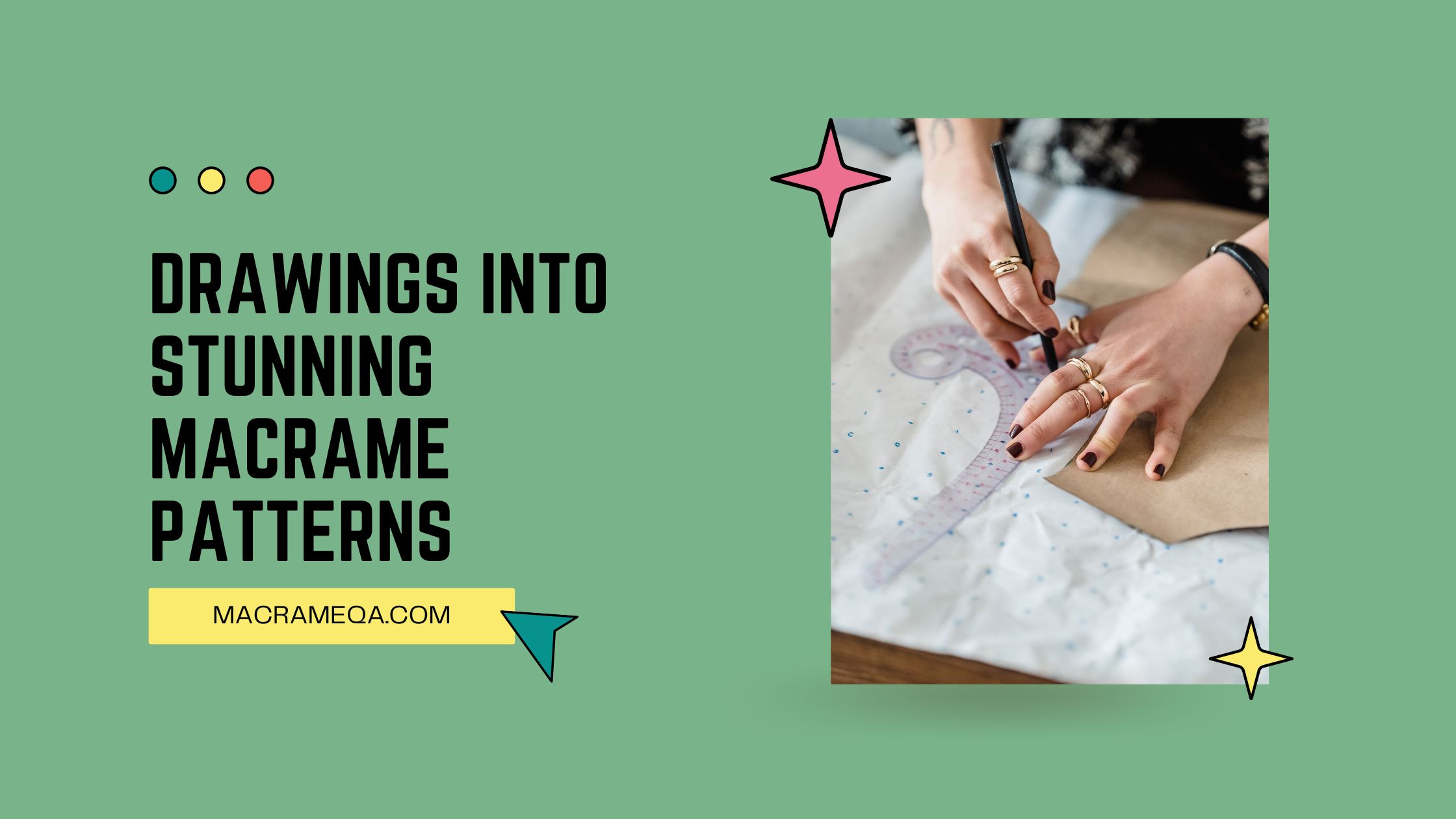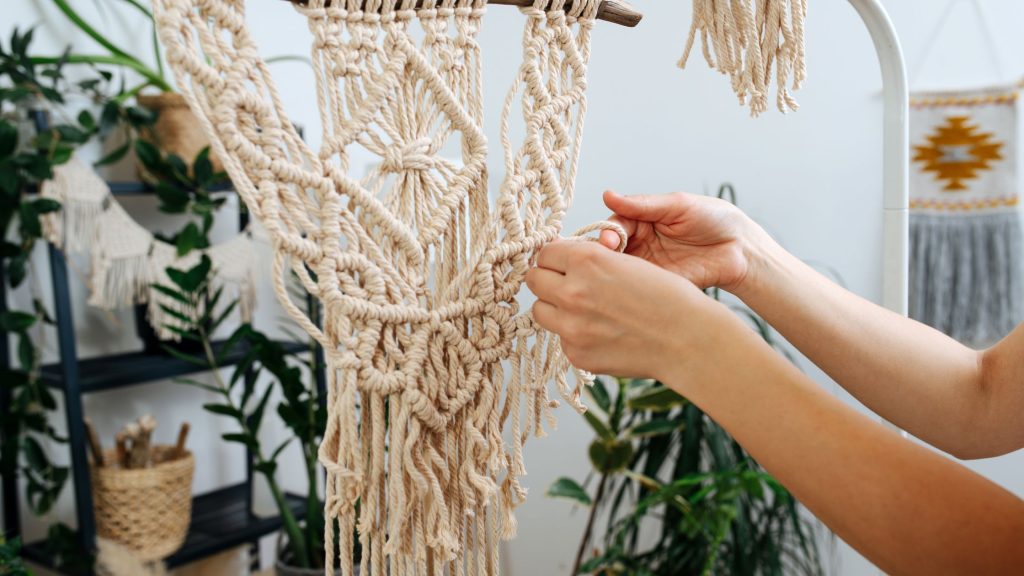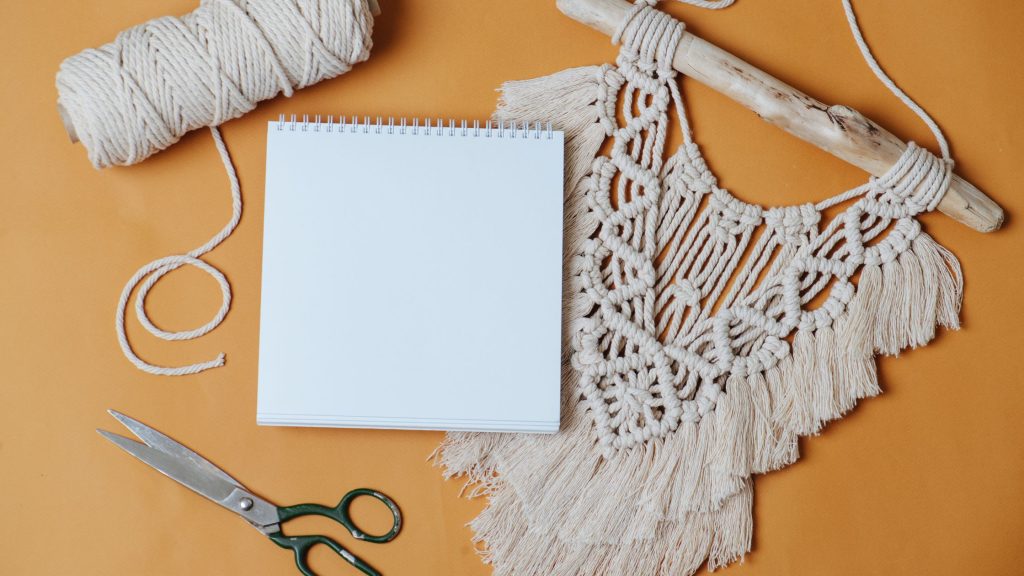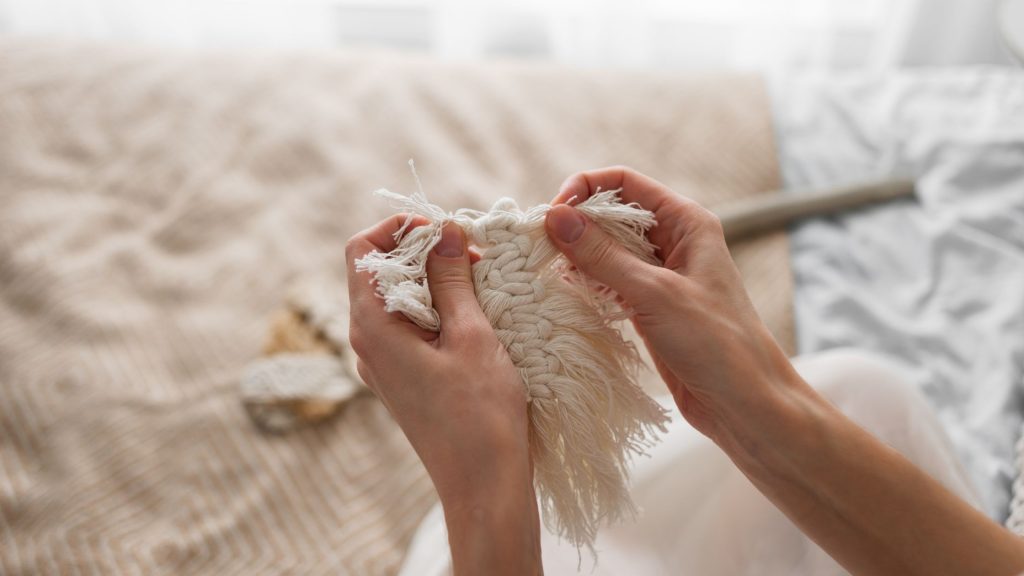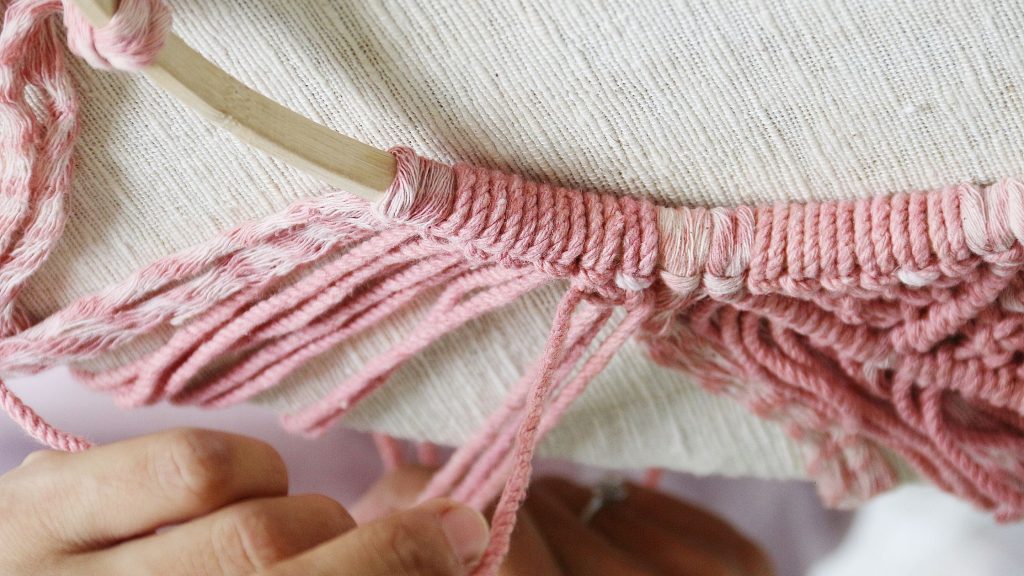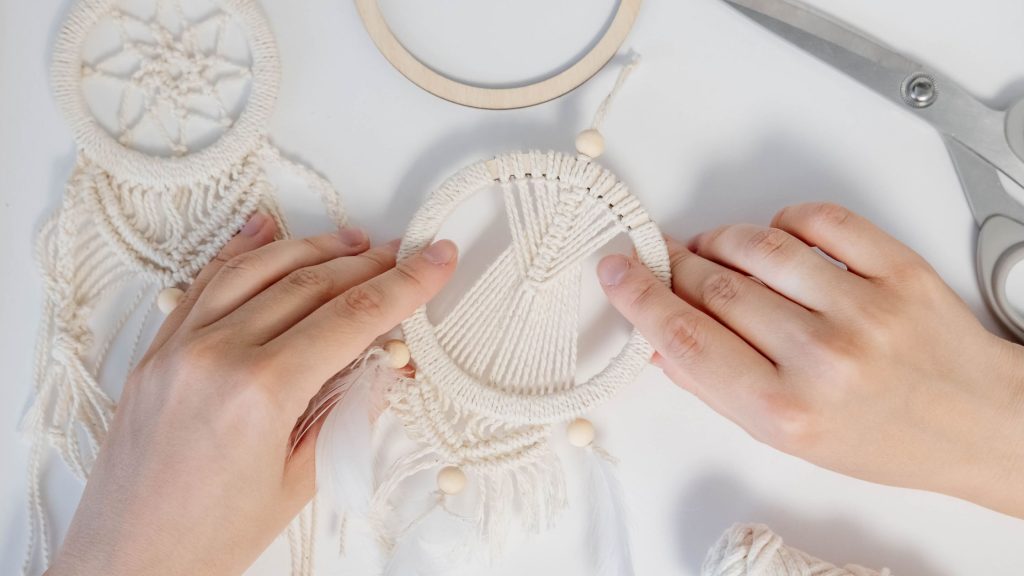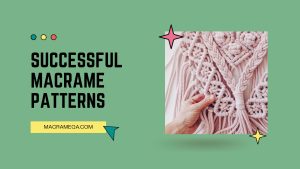Are you an avid artist looking to explore new creative avenues? If so, you may have found yourself wondering how to translate your drawings into stunning macrame patterns. While it may seem like a daunting task, fret not! In this article, we’ll guide you through the process of transforming your intricate sketches into beautiful macrame designs. Whether you’re a seasoned artist or a beginner, get ready to embark on a journey of artistic transformation. So, grab your pencil and let’s unravel the secrets behind turning your drawings into captivating macrame patterns.
Understanding Macrame Patterns
Macrame patterns are intricate designs and arrangements of knots used to create beautiful and decorative textile art. By combining various knotting techniques and different types of cords, you can create stunning macrame pieces for wall hangings, plant hangers, and other home decor items. Macrame patterns can range from simple and minimalistic to complex and elaborate, allowing you to unleash your creativity and add a personal touch to your artwork.
Why Use Macrame Patterns?
Using macrame patterns has several advantages. Firstly, it provides a structured and organized approach to creating your macrame piece. Instead of randomly knotting cords together, following a pattern ensures that your design is well-balanced and visually appealing. Patterns also help you to visualize the final product, making it easier to stay motivated throughout the process.
Types of Macrame Patterns
There are various types of macrame patterns that you can explore depending on your taste and skill level. Some common examples include the square knot pattern, alternating square knot pattern, spiral knot pattern, and larks head knot pattern. Each pattern offers a unique look and requires different knotting techniques. Experimenting with different patterns can help you discover new styles and techniques to enhance your macrame creations.
Preparing Your Drawing for Macrame
Selecting the Drawing
To turn your drawing into a macrame pattern, begin by selecting a drawing or image that you would like to recreate with knots. This can be an existing design, a sketch, or even a photograph. It’s important to choose a drawing that suits the style and aesthetic you want to achieve in your macrame piece.
Simplifying the Design
Once you have chosen your drawing, it may be necessary to simplify the design before transferring it to the macrame grid. Macrame relies on the use of knots and cords, so intricate details or complex shapes may not translate well into the medium. Simplifying the design involves identifying the key elements and focusing on the main shapes and contours.
Scaling and Adjusting the Size
Before transferring the drawing to the macrame grid, you will need to scale it appropriately. Consider the size of the finished macrame piece and the thickness of the cords you plan to use. Adjust the size of the drawing accordingly to ensure that the design fits well within the final dimensions.
Transferring the Drawing to Macrame Grid
Now it’s time to transfer the simplified and scaled drawing onto a macrame grid. The macrame grid is a visual representation of the knots and cords, allowing you to see how the pattern will look. Use a pencil or marker to carefully recreate the design on the grid, ensuring that each knot is accurately represented. This step is crucial in preparing your drawing for the creation of the macrame pattern.
Basic Macrame Knots and Techniques
To successfully create macrame patterns, it is essential to have a good understanding of basic macrame knots and techniques. Here are some common knots you will frequently encounter:
Larks Head Knot
The larks head knot is one of the most basic macrame knots. It is used to attach cords to a base or support and is often used as a starting point for various macrame projects.
Square Knot
The square knot is a fundamental macrame knot that creates a square-shaped pattern. It is created by crossing the left cord over the right cord and then taking the right cord over the left cord. This knot can be repeated to create a series of square knots, commonly used in macrame patterns.
Half Hitch
The half hitch knot is created by taking one cord over another and pulling it through to create a loop. It can be used to create various decorative effects in macrame patterns.
Double Half Hitch
Similar to the half hitch, the double half hitch involves taking two cords over another cord and pulling them through to create loops. This knot is commonly used for creating diagonal or spiral patterns in macrame.
Spiral Knot
The spiral knot is formed by repeatedly creating double half hitch knots in a specific pattern, resulting in a twisting or spiraling effect. It adds depth and dimension to macrame patterns, making them more visually interesting.
Alternating Square Knot
The alternating square knot pattern is created by interchanging square knots in a specific sequence. This pattern produces a braided or basket-like texture and is commonly used in macrame plant hangers and baskets.
Creating the Macrame Pattern
Breaking Down the Drawing
To create a macrame pattern from your drawing, start by breaking down the design into manageable sections. Identify distinct elements or shapes within the drawing that can be translated into knots. By breaking the drawing down, you can focus on one section at a time and ensure that each knot is accurately placed.
Identifying Key Elements
Once you have broken down the drawing, identify the key elements that define the design. These elements could be specific shapes, lines, or textures that are essential to the overall look of the drawing. By focusing on these key elements, you can maintain the integrity of the design when recreating it in macrame.
Translating Elements into Knots
After identifying the key elements, translate them into the appropriate macrame knots. Experiment with different knotting techniques to achieve the desired texture, shape, and visual effect. Consider how each knot will interact with adjacent knots to ensure a cohesive and balanced macrame pattern.
Determining Knot Placement
The next step is to determine the placement of each knot within the macrame pattern. This involves considering the spacing, alignment, and arrangement of knots to accurately represent the drawing. Take your time in this step, as it is crucial for achieving the desired outcome.
Adding Fringe or Tassels
To add an extra dimension to the macrame pattern, you can incorporate fringe or tassels. Fringe is created by leaving some cords loose and unknotted at the bottom of the macrame piece, while tassels involve knotting cords together and then unraveling them to create a fringed effect. Experiment with different lengths and styles of fringe or tassels to enhance the overall visual appeal of your macrame pattern.
Digital Tools for Creating Macrame Patterns
As technology progresses, so does the availability of digital tools to aid in creating macrame patterns. These tools can help streamline the design process and provide additional visual aids. Here are some digital tools you can use:
Using Macrame Design Software
Macrame design software allows you to create and manipulate macrame patterns digitally. With features such as drag-and-drop interfaces, cord length calculation, and visualization tools, these software programs provide a comprehensive platform for designing intricate macrame patterns.
Online Macrame Pattern Generators
Online macrame pattern generators are tools that generate macrame patterns based on parameters you input. You can specify the type of knots, the number of cords, and the overall structure of the pattern. These generators can be valuable for beginners or those looking for inspiration.
Macrame Pattern Apps
Mobile apps dedicated to macrame pattern creation have become increasingly popular. These apps often offer a wide range of pre-designed patterns, as well as features to create custom designs. With the convenience of having pattern design tools on your mobile device, you can easily create and experiment with various macrame patterns on the go.
Tips and Tricks for Designing Macrame Patterns
Designing macrame patterns can be a fun and rewarding experience. Here are some tips and tricks to keep in mind:
Start with Simple Designs
If you’re new to macrame pattern design, it’s best to start with simple designs. As you gain more experience and confidence, you can gradually incorporate more intricate elements and techniques into your patterns.
Experiment with Knot Combinations
Don’t be afraid to experiment with different combinations of knots. Mixing various knots and techniques can result in unique and eye-catching patterns. Allow yourself the freedom to play around and discover new possibilities.
Incorporate Different Materials
Consider incorporating different materials into your macrame patterns. Adding beads, feathers, or even unconventional materials like wire can create interesting textures and provide a personal touch to your designs.
Consider Color and Texture
While macrame patterns are predominantly created using cords, incorporating color and texture can elevate your designs. Experiment with dyed cords, different types of cord material, or even different weights of cord to add depth and visual interest to your patterns.
Testing and Refining Your Macrame Pattern
Creating a Test Piece
Once you have designed your macrame pattern, it’s a good idea to create a test piece before starting on the final project. This allows you to evaluate the overall appearance and make any necessary adjustments without committing to a large-scale project.
Adjusting Knot Placement or Size
During the testing phase, you may identify areas where knot placement or size needs adjustment. Take note of these areas and consider ways to refine the pattern to achieve the desired effect. This could involve shifting knots, altering the size of certain elements, or modifying the overall structure of the pattern.
Refining the Pattern Based on Test Results
After evaluating the test piece, take the feedback you receive and refine the macrame pattern accordingly. Use this opportunity to make any necessary revisions and ensure that the final pattern meets your expectations. Keep in mind that refinement is an iterative process, and you may need to create multiple test pieces before achieving the perfect result.
Sharing and Selling Your Macrame Patterns
Copyright Considerations
Before sharing or selling your macrame patterns, it’s important to understand copyright considerations. Ensure that your designs are original and not copied from existing patterns or artwork. It’s advisable to consult with a legal professional to ensure that you are compliant with copyright laws.
Digital and Physical Patterns
When sharing or selling macrame patterns, you can choose to offer them in both digital and physical formats. Digital patterns can be easily downloaded and printed by customers, while physical patterns can be mailed or sold in stores. Providing options for both formats caters to a wider audience.
Platforms for Selling Macrame Patterns
There are numerous platforms available for selling your macrame patterns. Online marketplaces, such as Etsy or dedicated macrame websites, are popular options. Consider the reach, fees, and user interface of different platforms to choose one that aligns with your goals and target audience.
Finding Inspiration for Macrame Patterns
Exploring Macrame Communities and Blogs
Joining macrame communities and following macrame-specific blogs can provide a wealth of inspiration. Engaging with fellow macrame enthusiasts and learning from experienced artists can help you discover new techniques, trends, and design ideas.
Attending Workshops and Classes
Attending macrame workshops or classes is an excellent way to learn from experts and expand your design repertoire. Workshops often offer hands-on experience, allowing you to experiment with different patterns and techniques under the guidance of experienced instructors.
Following Macrame Artists on Social Media
Social media platforms, such as Instagram and Pinterest, are treasure troves of macrame inspiration. Follow macrame artists and creators to stay up to date with their latest designs and have a constant source of inspiration at your fingertips.
Conclusion
Turning your drawings into macrame patterns is an exciting opportunity to blend your artistic vision with the intricate world of knotting. By understanding the various types of macrame patterns, mastering the basic knots and techniques, and utilizing digital tools when necessary, you can bring your drawings to life in the form of stunning macrame creations. Remember to experiment, refine, and share your designs, and never stop seeking inspiration from the vibrant macrame community. Happy knotting!

